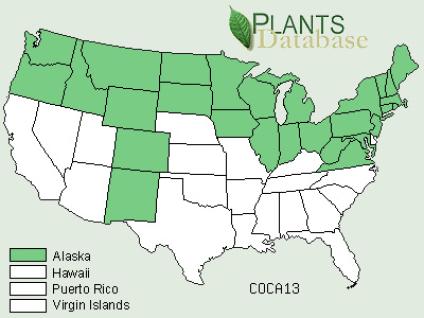Dwarf Dogwood (Cornus canadensis L.)

By Mary Stensvold

Dwarf dogwood, is also known as bunchberry, bunchberry dogwood, and Canadian dwarf cornel. This perennial sub-shrub is a diminutive member of the dogwood family (Cornaceae). Dwarf dogwood is native to a broad area extending west from extreme southern Greenland across North America in boreal Canada and the northern tier of the United States (south down the Rocky Mountains into Colorado and New Mexico), across Alaska to northeastern Asia. It thrives in moist well-drained soils of forests and forest edges. In some places it is the dominant ground cover of the forest floor, in other places it can carpet stumps and fallen logs.
The erect flowering stems are generally 4-8 inches tall. The form of dwarf dogwood’s inflorescence, leaf shape and leaf venation are very similar to its relative, the flowering dogwood tree.
The flowering stems emerge from the creeping underground stem late in the spring. Leaves unfold into a whorl of four to six leaves; above these leaves the inflorescence opens and flowers bloom from May through early July.
The “flowers” of dwarf dogwood are somewhat deceptive. The four white “petals” are actually modified leaves (bracts) resembling flower petals. Clustered in the center of these four white to pinkish petal-like bracts are the numerous tiny white to greenish to purplish flowers of the dwarf dogwood. Flowers are pollinated by various flies and bees, which are attracted by the bright white petal-like bracts.

In the late summer, clusters of spherical red fruit appear on the inflorescence, thus the name bunchberry. Although the fruits are not poisonous, they are not particularly tasty, have an odd cottony texture and a single seed. The leaves become somewhat leathery, and in the autumn the leaves can turn bright colors. Since the leaves are somewhat evergreen, in protected places they can remain throughout the winter.
For More Information
